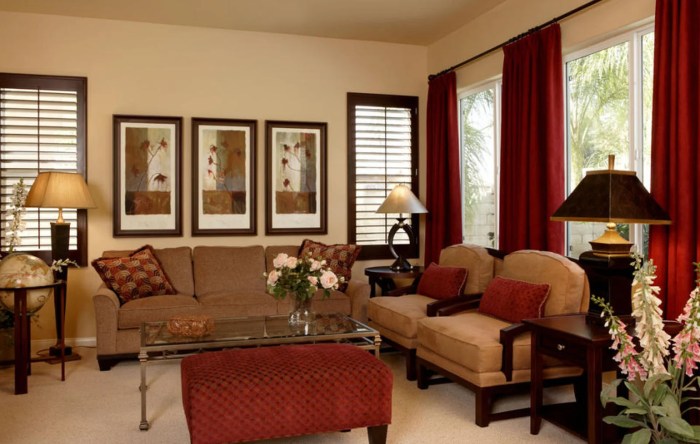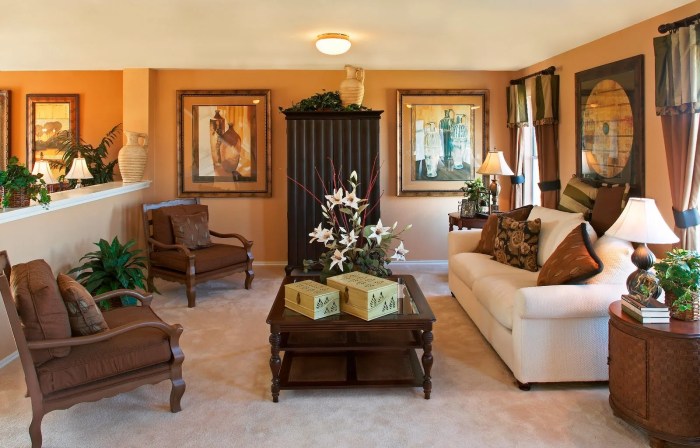Exploring House Decorating: Transform Your Space with Style
Embark on a journey through the world of house decorating, where creativity meets functionality to create stunning living spaces. From modern chic to cozy farmhouse vibes, there's a style for every taste and preference.
Discover how color schemes, furniture arrangement, and decorative elements play a vital role in shaping the ambiance of your home.
House Decorating Styles
When it comes to decorating your home, there are various styles you can choose from to reflect your personal taste and create a cohesive look throughout your space. Each decorating style has its own unique elements that set it apart.
Let's explore some popular house decorating styles and how you can incorporate them into different rooms of your house.
Modern Style
Modern style is known for its clean lines, minimalism, and sleek finishes. To incorporate modern style into your home, opt for furniture with simple silhouettes, neutral color palettes, and a focus on functionality. Add in pops of bold colors or geometric patterns for a contemporary touch.
Minimalist Style
Minimalist style focuses on simplicity, functionality, and a clutter-free environment. To achieve a minimalist look, choose furniture with clean lines, neutral colors, and only essential decor items. Keep spaces open and uncluttered to create a sense of calm and serenity.
Farmhouse Style
Farmhouse style is all about rustic charm, cozy textures, and vintage elements. To bring farmhouse style into your home, incorporate reclaimed wood furniture, cozy textiles like plaid or burlap, and vintage decor pieces. Add in some greenery and natural elements to complete the look.
Bohemian Style
Bohemian style is eclectic, colorful, and full of personality. To embrace bohemian style in your home, mix and match patterns, textures, and colors. Layer rugs, throw pillows, and tapestries for a relaxed and free-spirited look. Incorporate plants and global-inspired decor items to enhance the boho vibe.
Color Schemes
Color schemes play a crucial role in setting the mood and ambiance of a room. The right combination of colors can make a space feel cozy, spacious, vibrant, or relaxing. It's essential to consider the size of the room and the lighting when choosing a color scheme.
Impact of Color Schemes
Different color schemes can evoke various emotions and feelings. For example, warm tones like red, orange, and yellow can create a cozy and inviting atmosphere, perfect for living rooms or dining areas. On the other hand, cool tones like blue, green, and purple can promote relaxation and tranquility, making them suitable for bedrooms or bathrooms.
Popular Color Combinations
- Neutral Palette: A classic choice that includes whites, grays, and beige. Ideal for creating a timeless and versatile look.
- Monochromatic Scheme: Using different shades of the same color for a sophisticated and harmonious feel.
- Complementary Colors: Colors opposite each other on the color wheel, like blue and orange or purple and yellow, for a vibrant and dynamic look.
- Analogous Colors: Colors next to each other on the color wheel, such as blue and green or red and orange, for a cohesive and calming effect.
Choosing the Right Color Scheme
Consider the size of the room when selecting a color scheme. Lighter colors can make a small room appear more spacious, while darker tones can add coziness to a large space. Additionally, take into account the natural light in the room.
Rooms with ample natural light can handle bold and dark colors, while dimly lit spaces may benefit from lighter hues to brighten them up.
Furniture Arrangement
When it comes to decorating your house, furniture arrangement plays a crucial role in creating a functional and aesthetically pleasing space. Properly arranging furniture can maximize space, improve flow, and create balance within a room. Here are some tips to help you arrange your furniture like a pro:
Maximizing Space and Functionality
- Start by measuring the dimensions of your room and the furniture you plan to use. This will help you determine the best layout to maximize space.
- Consider the function of each room and arrange furniture accordingly. For example, in a living room, place seating areas close together to encourage conversation.
- Leave enough space for traffic flow to move freely around the room without obstacles.
- Use multipurpose furniture, such as storage ottomans or nesting tables, to maximize functionality in smaller spaces.
Importance of Flow and Balance
- Ensure there is a clear path between furniture pieces to maintain good flow within the room.
- Avoid overcrowding one area of the room with furniture, as this can disrupt the balance and make the space feel cluttered.
- Balance large furniture pieces with smaller ones to create visual harmony in the room.
- Consider the focal point of the room, such as a fireplace or a large window, and arrange furniture to highlight these features.
Creating Focal Points through Furniture Arrangement
- Arrange furniture around a focal point, such as a statement piece of artwork or a unique piece of furniture, to draw attention and create visual interest.
- Use area rugs to define different zones within a room and create focal points for specific furniture groupings.
- Consider the natural flow of light in the room when arranging furniture to enhance the focal points and create a welcoming atmosphere.
- Experiment with different furniture arrangements to find the best layout that highlights the focal points and enhances the overall design of the room.
Decorative Elements

When it comes to decorating a room, adding decorative elements like artwork, mirrors, rugs, and plants can truly elevate the space and give it a personal touch. These elements play a crucial role in adding character and creating a cohesive look in any room.
Texture, patterns, and layering are key components when it comes to decorating with these elements. Texture adds depth and visual interest, while patterns can bring a pop of color and personality to the room. Layering different textures and patterns can create a rich and dynamic look that is visually appealing.
Mixing and Matching Decorative Elements
- Consider the color scheme of the room when choosing decorative elements. Opt for pieces that complement or contrast with the existing colors to create visual interest.
- Use artwork to add a focal point to the room. You can mix different sizes and styles of artwork to create a gallery wall or opt for a large statement piece.
- Mirrors can help brighten up a space and make it appear larger. Place mirrors strategically to reflect natural light and create the illusion of a bigger room.
- Rugs can define different areas within a room and add warmth. Choose rugs that complement the furniture and overall style of the room.
- Plants bring life and freshness to a room. Mix and match different types of plants to add texture and color to the space.
Final Thoughts

As we wrap up our exploration of house decorating, remember that your home is a canvas waiting to be adorned with your personal touch. Let your creativity flow and watch as your living space transforms into a reflection of your unique style and personality.
FAQ Summary
How do I choose the right color scheme for a small room?
Opt for light colors to create a sense of openness and use strategic pops of bold hues to add personality without overwhelming the space.
What are some creative focal point ideas for a living room?
Consider a statement wall with bold wallpaper or artwork, a striking piece of furniture, or a stunning light fixture to draw attention and add visual interest.
How can I mix different decorating styles harmoniously?
Focus on a unifying element such as color palette or texture, and blend styles gradually by incorporating pieces that complement each other rather than clash.
Is it essential to follow a specific decorating style or can I mix and match?
While sticking to a particular style can create a cohesive look, mixing different styles can add depth and personality to your decor. Just ensure there's a common thread tying everything together.




